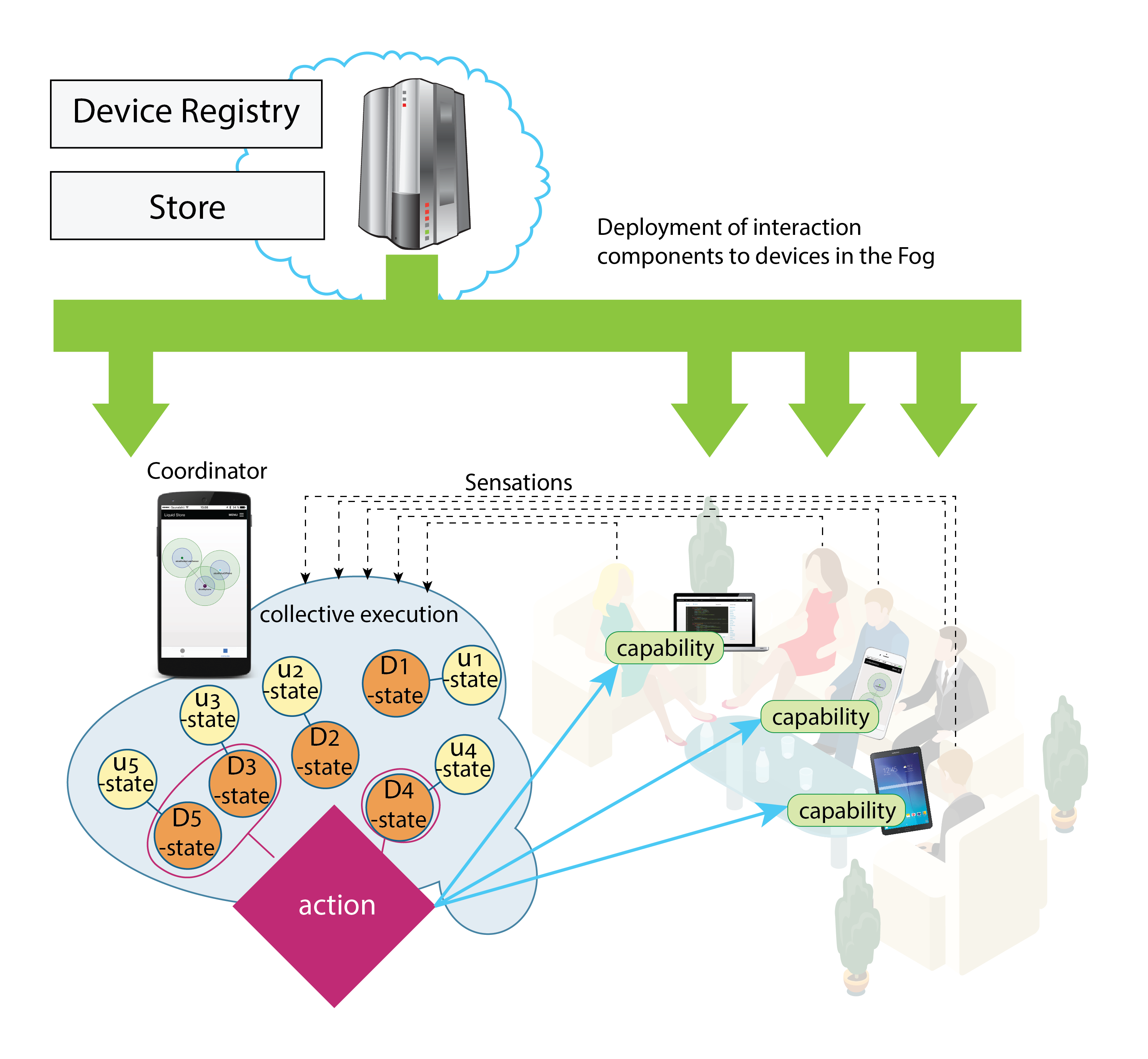This is a re-post from JSS Editor’s Selection on Medium. Read the original post from here.
The contemporary computing environment has shifted from single node computing to increasingly distributed computing as the number of interconnected devices has grown. Despite of this shift in the computing paradigm, the way we think about software has not dramatically changed over the time: Software application is yet considered to be solely executed by a single entity at the time — one entity possibly coordinating the others.
The interconnected entities can together be considered as the runtime environment.
With our novel concept of Collective Executions we have taken the first steps towards new kind of computing paradigm and programming model where multiple devices dynamically, at the same time form the runtime environment where multiple devices are at the same time executing the same piece of software. The devices — as well as other entities, like humans and services — are then assigned to certain roles in the execution. Underneath a novel framework takes care of forming this runtime that enables such collective software execution by taking care of things like state synchronization, device coordination etc.
Coalescence and disintegration — Novel way of thinking the application state
In the very core of this model is the concept of coalescence and disintegration. In physics, these concepts describe the phenomena where two water drops merge into each other, or split. The analogy in our approach is that the software instances running on different entities can be merged as well into one instance. Then the state synchronization between the newly joined devices begins. Similarly, when disintegration takes place, the state synchronization ends.
The coalescence and disintegration take place when the distance between the executing entities meets certain thresholds in n-dimensional space. For example, the distance can be physical distance — like the proximity of other devices executing the same application, or it can be for instance the social distance: the family members, friends or people having some other certain social relationship may cause the application instances to coalescence and jointly start executing the same application.
The distance can also be measured in the virtual world, where today common interests connect millions of people: People liking the same video game trailers could then jointly start a multiple player game.
More formally, we define the distance for two collective execution instances:
An Example Application
To illustrate how the Collective Executions work in practice, let’s consider the following PhotoSharing example: A group of people has gathered together. The group consists of friends and family members, so the distance in the social world is short. This can act as a trigger that their PhotoSharing executions are enabled to coalescence.
From the user’s perspective, the idea of the PhotoSharing is to initiate discussion among the people that have gathered together. Hence while the PhotoSharing is running, it also notices that the physical distance is under the threshold value that is being used for proactively suggest viewing their most recent and previously un-shared photos related to specific topic, like recent trips to abroad or family life for instance. (Common interests, distance in the virtual world). The Collective Execution then forms the state by synchronizing the unseen photos and the currently shown photo among the participating devices. One device at the time acts as a coordinator and coordinates the other to show certain photo. Other devices act as screens, showing the same selected photo at the same time. This has been depicted in Figure 2.
Future Work
It’s obvious, that there are numerous privacy and security concerns in such proactive approach. Hence plenty of research would be required for instance to make sure that no personal and intimate data will leak into wrong hands. Also, user experience perspective on the security should not be overlooked to make sure that the users a) understand how and by whom their data is being used, and b) not to burden the user with constant interruptions for regarding the data usage or proactive invocation of the activities.
Acknowledgements
This blog post is based on our articles in JSS and IEEE Software that we from the department of Computer Science, University of Helsinki, Finland have co-authored with our colleagues at the departments of Electronics and Communications Engineering and Pervasive Computing, Tampere University, Finland.
References
Mäkitalo, N., Aaltonen, T., Raatikainen, M., Ometov, A., Andreev, S., Koucheryavy, Y., & Mikkonen, T. (2019). Action-Oriented Programming Model: Collective Executions and Interactions in the Fog. Journal of Systems and Software, 157, 110391. DOI: https://doi.org/10.1016/j.jss.2019.110391
Mäkitalo, N., Ometov, A., Kannisto, J., Andreev, S., Koucheryavy, Y., & Mikkonen, T. (2017). Safe, secure executions at the network edge: coordinating cloud, edge, and fog computing. IEEE Software, 35(1), 30–37. DOI: http://doi.org/10.1109/MS.2017.4541037



